THE ARCHITECTURE OF THE BUILDING
When constructing a new building or adding security measures to an existing one, it is important to conduct risk assessment as early as possible. This is partly to set expectations in relation to the property developer's wishes regarding, e.g. the function of the building, aesthetic expression, and the well-being of the users, but also to establish an appropriate level of safety. From this, it is possible to project which security measures should be included in the overall solution and how these can be integrated into the architecture.
Thus, protection of buildings requires great attention in relation to all perspectives in establishing security solutions.
Below, you will find advice and considerations to include when incorporating protective security measures into the architecture of your building.
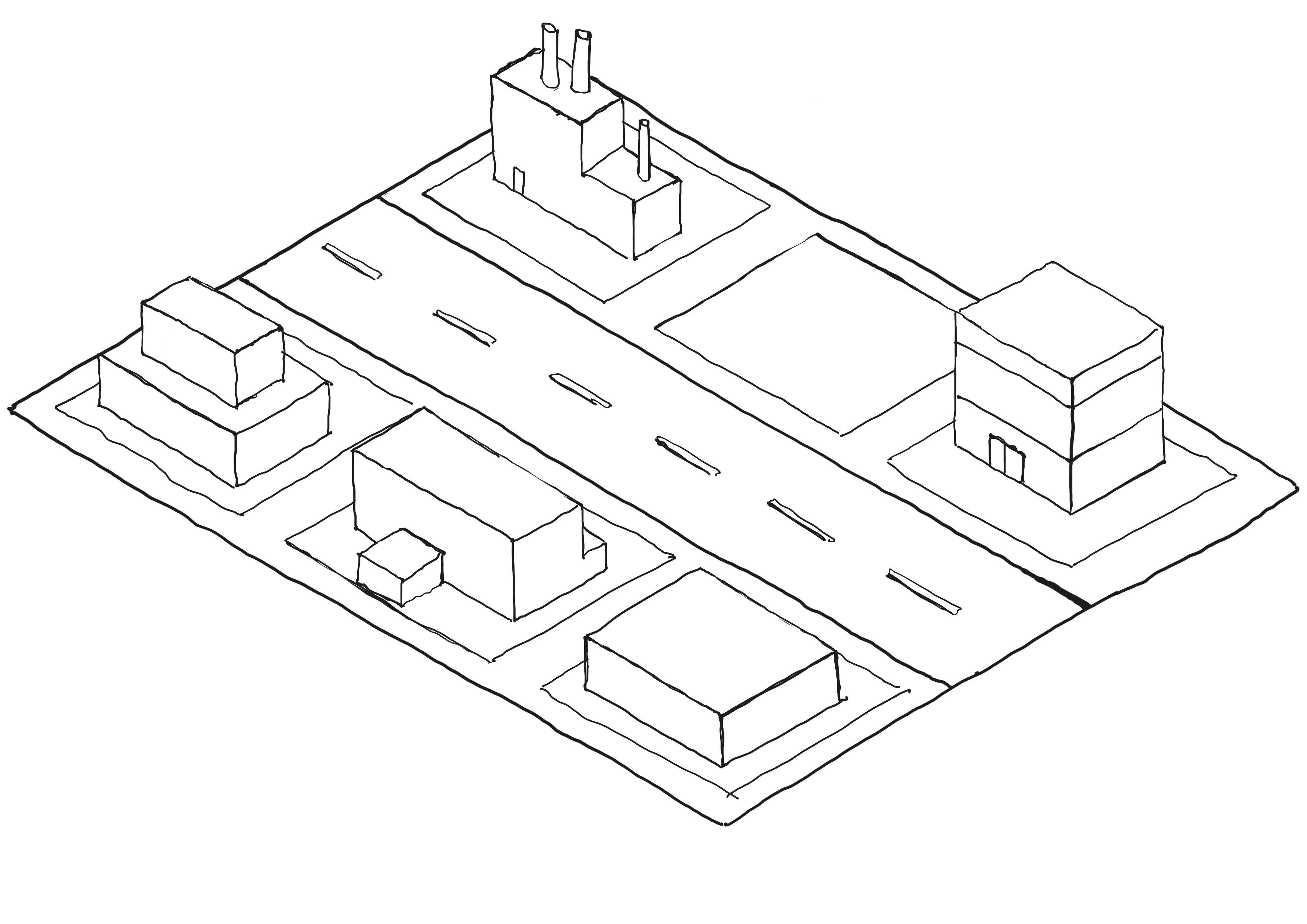
New build
When designing the protective security measures for e.g., a new office building, it should be taken into consideration that it is a workplace where people spend many hours a day. In addition to considering factors such as daylight, climate, etc. into the architecture, one must also think about how the various security measures are implemented so that the daily use of the building is incorporated, e.g. users' movement inside the building, deliveries of goods and the level of public access to the building.
Another advantage of a new build is that you have the opportunity to future-proof and, not least, retain a level of flexibility into the building. This can be done by preparing cables for installations, making it easier and cheaper to implement additional or relocate existing security measures if needed in the future.
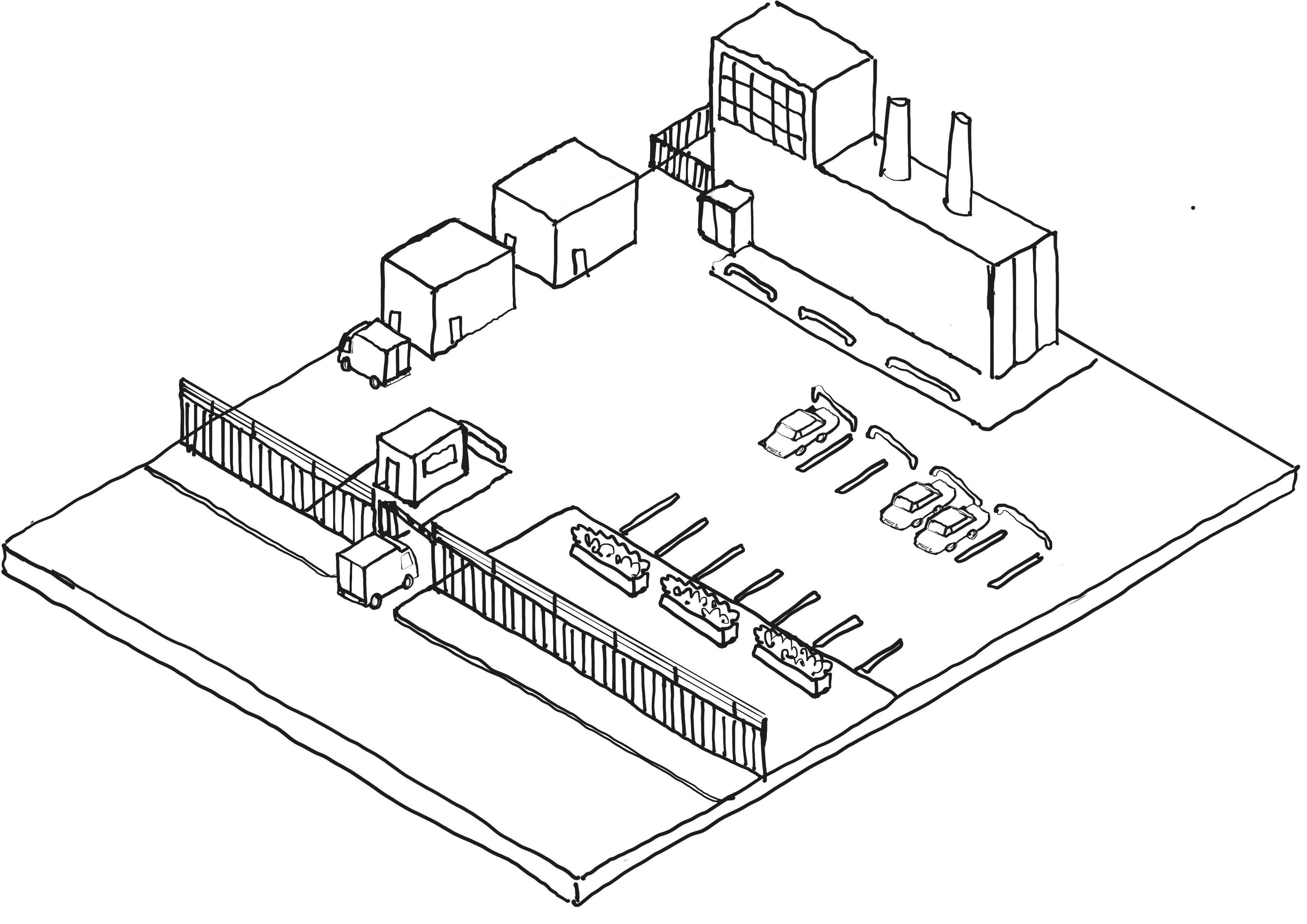
Existingbuildings
Protection of a pre-existing building or a multi-building facility can present several challenges, as the existing design may limit the number of possibilities available. Therefore, one must be prepared for a great deal of balancing both expectations and considerations regarding the security solutions and the associated cost between the parties, involved in the construction process. Sometimes, it will be necessary to devise tailor-made solutions to ensure the best possible outcome.
It can be impossible to install high-security products in the building exterior of a listed building. In this case, a possible compensative solution could be strengthening some of the other layers of security. E.g. you can install security measures in the stand-off zone, section the building or focus on cell protection.
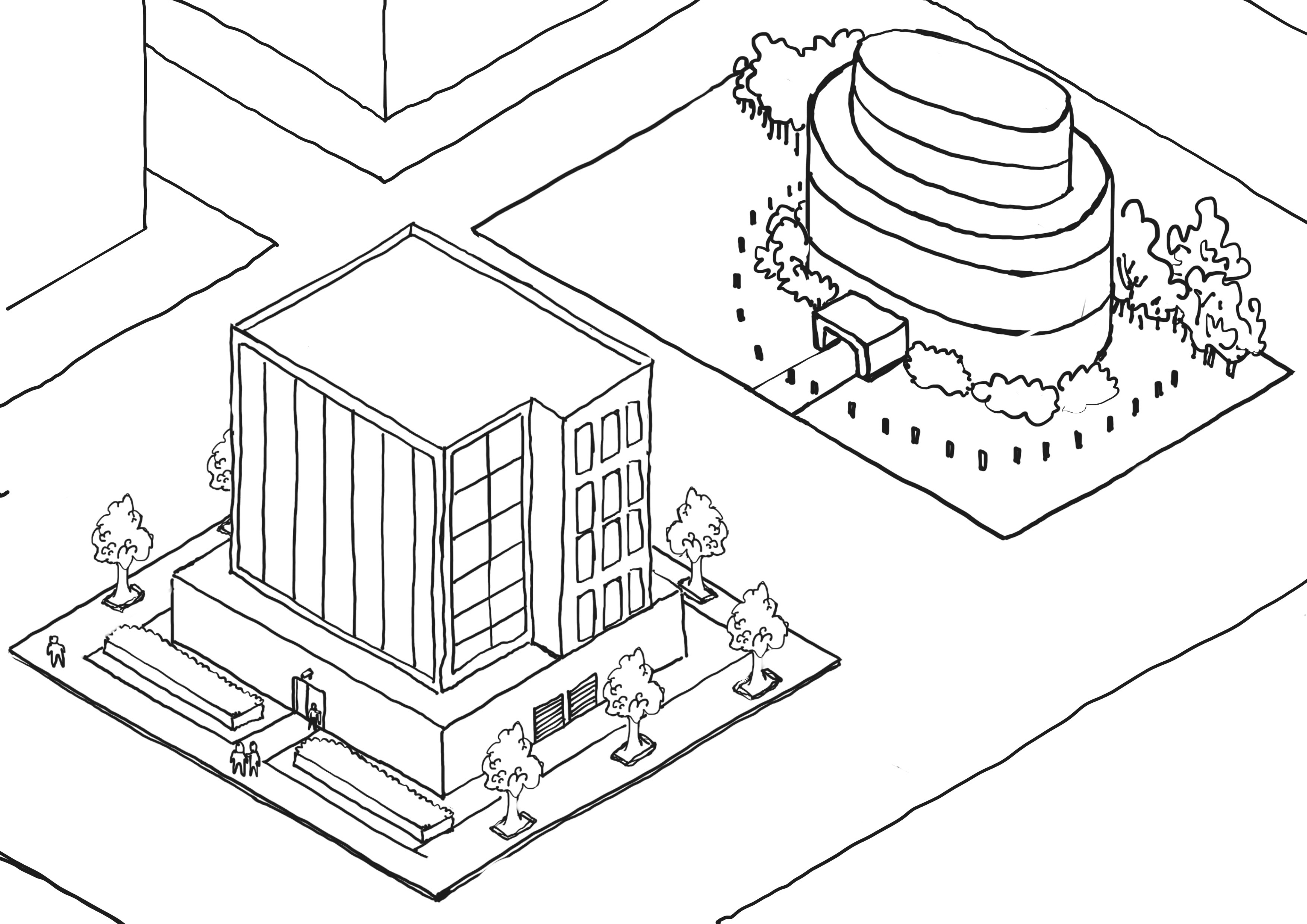
The shape of the building
When it comes to the shape of the building, there is no specific shape that is safer than others, even though round or curved building facades are often highlighted as being better at resisting blast waves from explosions, e.g. than straight facades. The key is in each project to make careful calculations of the design and construction of the facade in relation to the impact that the building must be able to withstand.
In addition, the manageability of the building or building site should be considered in relation to the desired level of security, daily use, and necessary protective security measures.
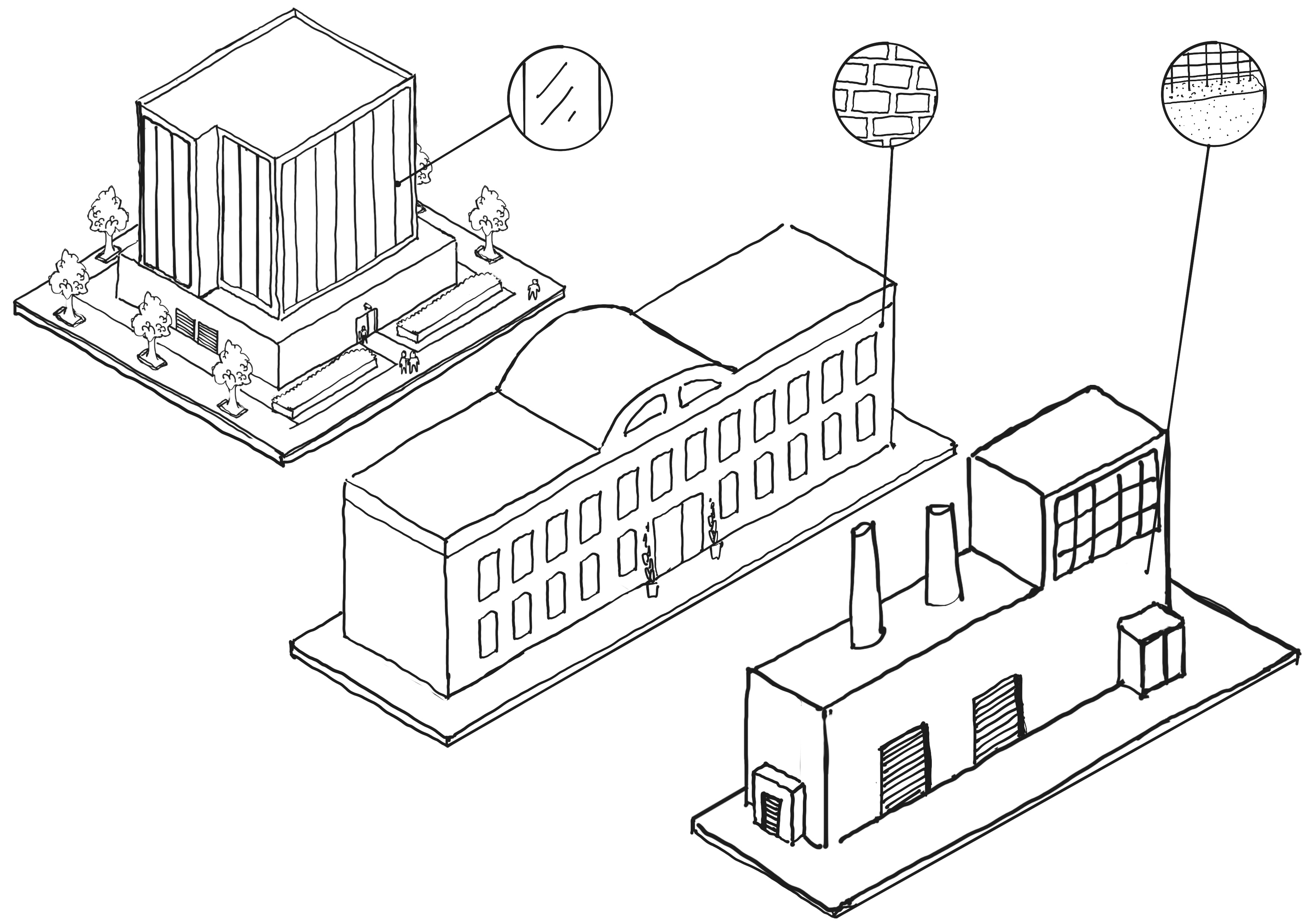
The frame structure of the building
As the frame structure is the building’s skeleton, it is vital as early as possible to establish what it must be able to withstand in terms of security – e.g. in the event of an explosion. The earlier this is clarified in the programming and design phases, the easier it is to incorporate security solutions into the aesthetic considerations. In general, it is important to understand that different levels of security directly influence the design and, thus, how security can be integrated into the architecture.
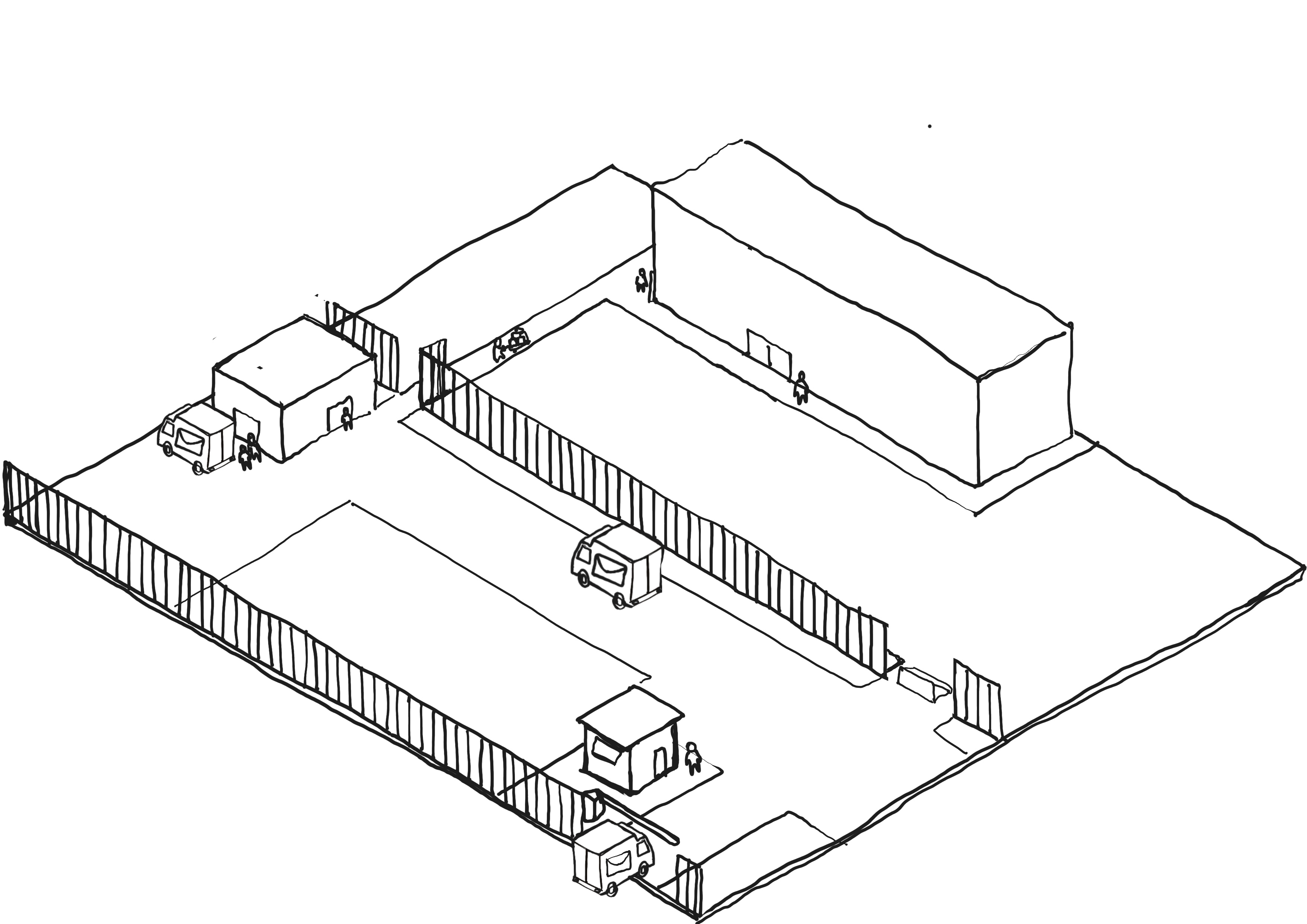
Buildings in the perimeter
Examples of architectural solutions for securing the perimeter and the stand-off zone, can be found in the solutions catalogue for the sites. However, the building to be protected may not have an outer perimeter and/or stand-off zone. This means that the building exterior may become the outermost layer of protection, which must be considered in the risk assessment process.
In certain situations, it may be advantageous to place buildings with specific functions, such as a guard function, in the perimeter or stand-off zone, if space allows. This can make the perimeter and/or safety zone control easier to manage.
Another example is mail and package handling. From a structural point of view, it can be costly to have a postal security facility that has to withstand blasts and other warfare agents in the main building. Therefore, it is possible to locate the postal and package services on the perimeter, well away from the main building. The postal security building must be designed to withstand blasts, and there should be equipment for screening mail and detecting explosives, poisons, and other warfare agents.
In general, all choices about where to place buildings and functions on the site should be based on a risk assessment.
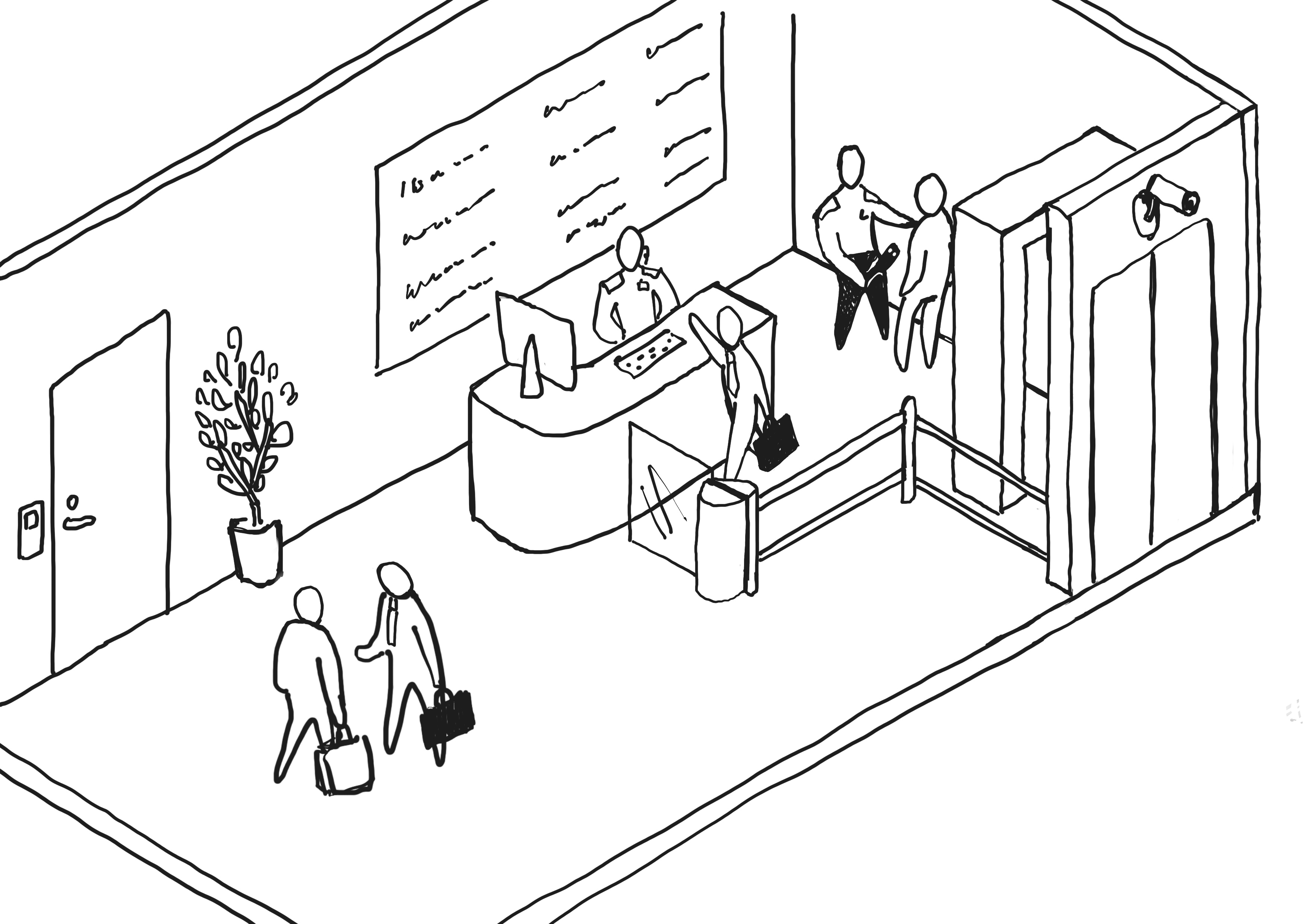
Entry points of the building
Access control of entry and exit points of the building can be designed as mantraps that can be closed and controlled as needed. The type and function of the mantrap and the materials to be used depend on the level of security and the desired effect. It is generally important to consider the dimensions of the transit areas according to the function of the input or output. E.g. when delivering goods, it must be large enough to accommodate both people and the goods delivered.
Also, you need to calculate the flow of people, i.e. the number of people and objects you expect to pass through the building or facility in a certain period of time, so as not to create a bottleneck and thereby an assembly of people outside the building or facility that could potentially be the target of a terrorist attack.
It is also important to consider communication options in the design, as it may be necessary to be able to communicate with people when they are in a mantrap.
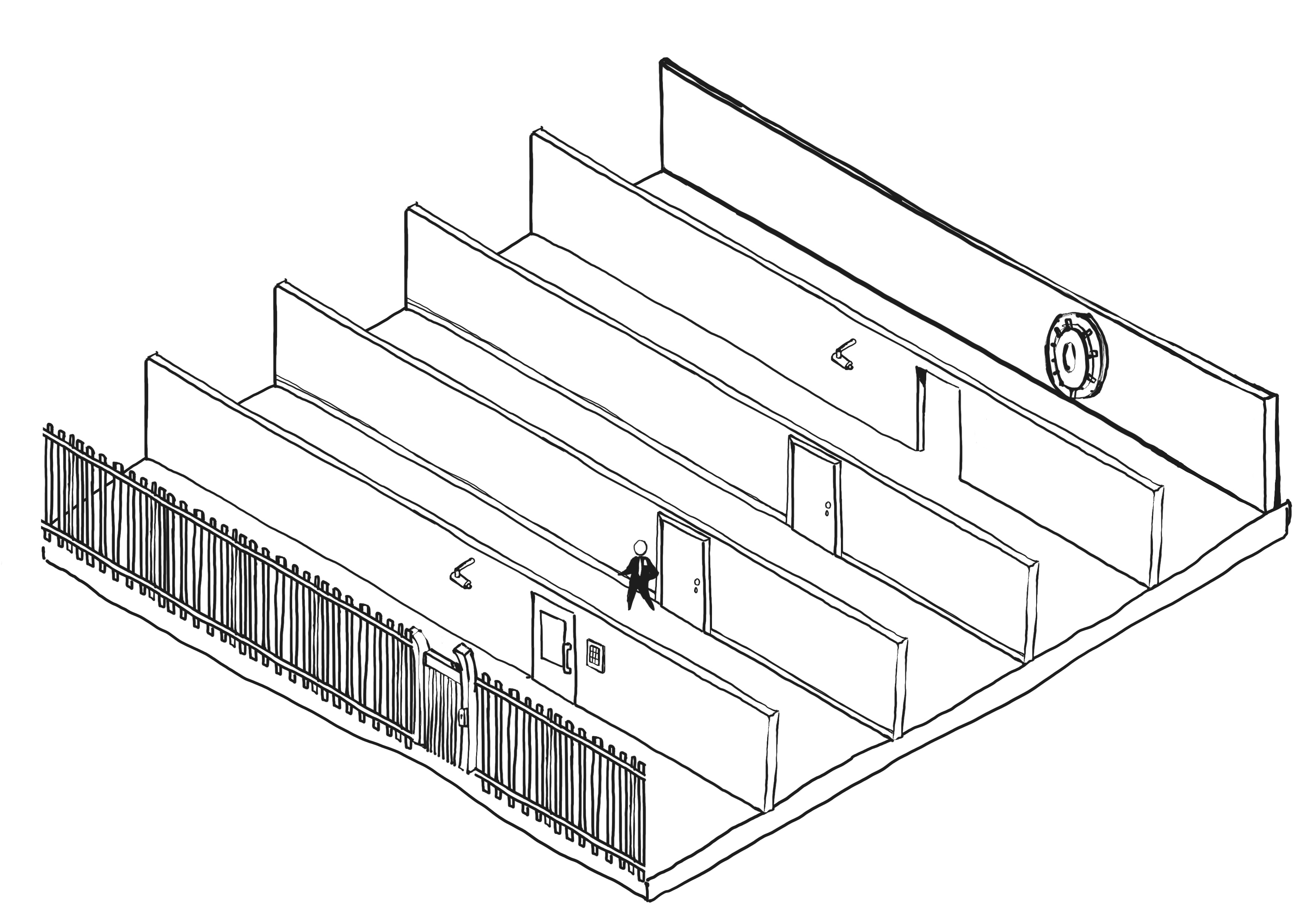
Bygningens sikringslag
When protecting a building, you can work with securing the building exterior, sectioning, cells, and objects. Common to all of them is that the overall effect must meet the desired level of security defined through a risk assessment. How you choose to design the solution, including which rooms or sections of the building you secure more than others and which security measures you choose to use, will depend on the context of the construction project. This means the function(s) of the building, the users of the building and the physical environment, e.g. new or existing buildings, the location of the building on the site, etc.
The day-to-day operation of the building and the prioritisation of resources are some of the most common reasons to secure a building facility at different levels. E.g. protection of a spectator stand can be prioritised over the parking area in a sports arena. Similarly, in a company that produces critical national technology, it may be relevant to secure production and research facilities, server centres, etc., at a higher level than parts of the company that are used for 'ordinary office use'.
When working with securing interior sections of a building, the division can be made either horizontally or vertically. In most cases, it will be best to section horizontally, as it is easier operationally to monitor and secure. If several floors are grouped in the same security section, this places additional requirements on the security solutions of e.g. stairs and lifts.
In addition, it can be more challenging for potential security guard functions, to cover several floors with multiple the access routes between them, simultaneously.
It is also an option to design scalable security solutions, with the possibility of upgrading the level of security according to changes in the threat landscape. This can be a way to accommodate concerns about the day-to-day operation of the building and user movement patterns without compromising too much on the security solution. The scalable solution can be implemented in all security layers.
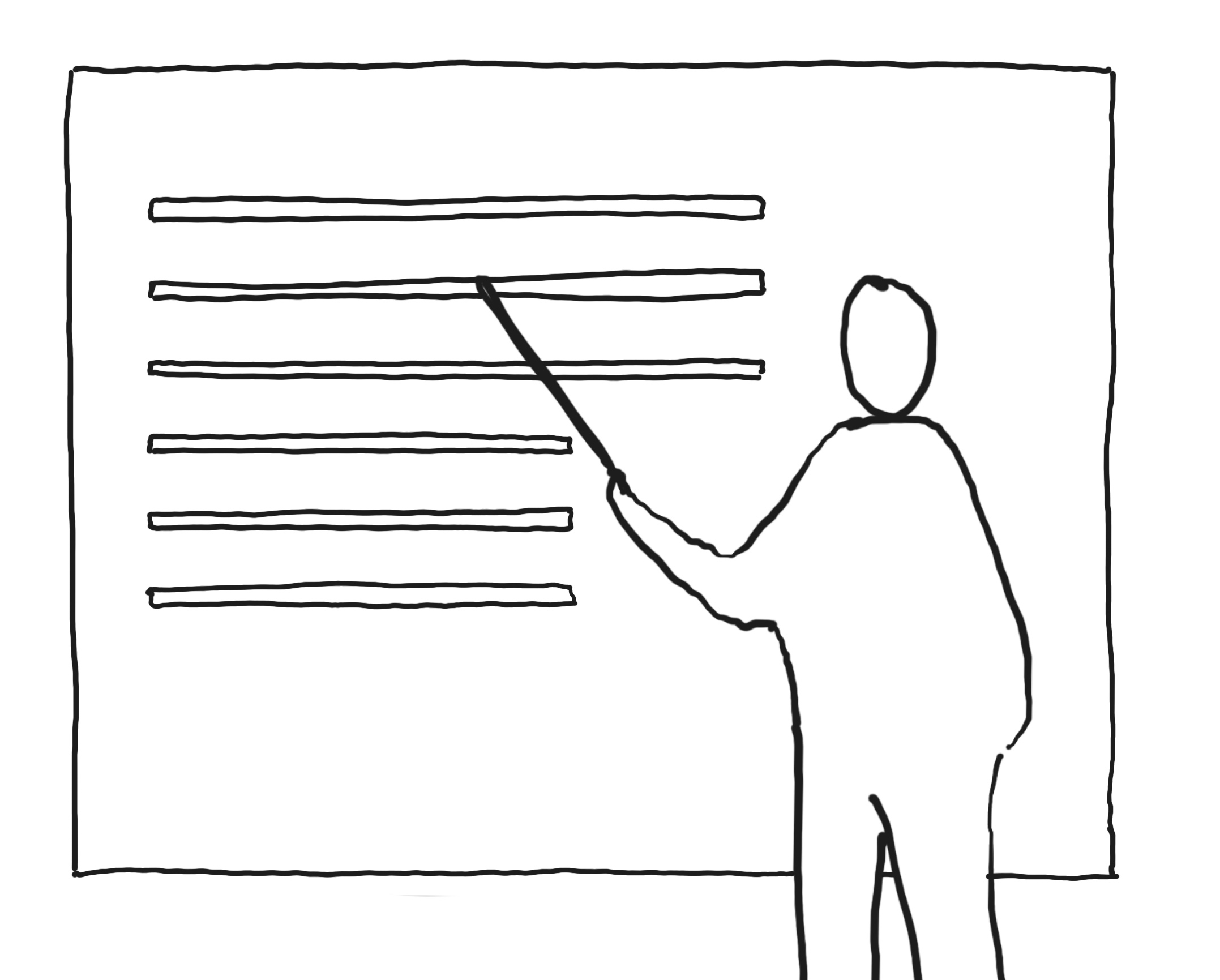
Building regulations and other legislation
As there may sometimes be an apparent conflict between the wishes and needs for fire protection and protective security solutions, respectively, it is important to establish a close dialogue between (the certified and independent) fire consultancy service and the security consultancy service already in the programme phase of the construction project.
As there is no specific legislation on protective security in Denmark, attention should be paid to the requirements of the Danish Building Regulations 2018 (BR18) and the Danish Working Environment Act, as they may influence the general design of the security solution and specific security measures.

